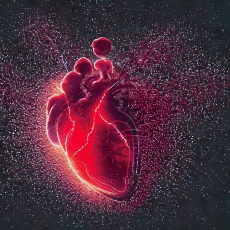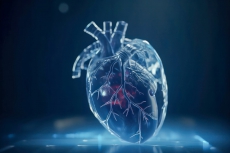Multi-levitation bioprinting of heart models for space exploration and medicine
Cutting-edge magnetic and acoustic levitation will bioprint heart models to improve protections against radiation in space and on Earth.

![]()
The PULSE project, funded by the European Innovation Council, aims to revolutionise bioprinting and advance its applications in space exploration and healthcare. To reach this goal, PULSE is developing a platform that combines magnetic and acoustic levitation to create ultra-fidelity 3D biological structures that simulate real tissues and organs. The PULSE platform’s activity is expected to start in 2027 on board the International Space Station. With a focus on cardiac health in space and on Earth, PULSE seeks to transform drug development and healthcare, leading to better outcomes for patients on Earth and increased safety for astronauts on deep space missions.

As a bold venture at the forefront of biomedical research, the PULSE project is poised to develop paradigm-changing bioprinting technology for applications in space and on Earth. Awarded nearly 4 million euros by the European Innovation Council’s Pathfinder Open, PULSE emerges from interdisciplinary scientific collaborations and, over five years, will foster technological innovations to improve human health and pave the way for safer and more sustainable space exploration.
By combining magnetic and acoustic levitation into an innovative bioprinting platform, PULSE’s device should be capable of achieving unparalleled spatiotemporal control of cell deposition. This new technology facilitates the precise manipulation of biological materials, enabling the creation of highly sophisticated and realistic organoids that closely mimic the complexity of the corresponding human organs.
One of the key applications of PULSE’s innovative bioprinting technology is the creation of in vitro 3D human heart models, which are essential tools for studying the effects of space and radiation on the human cardiovascular system. These advanced heart models will provide invaluable insights into cardiac physiology and pathology, facilitating the development of preventive and therapeutic solutions for astronauts embarking on long-term space missions and cancer patients undergoing radiation therapy.
According to Lorenzo Moroni, project coordinator and Professor of Biofabrication for Regenerative Medicine at the University of Maastricht, “The ambitious goals of the PULSE project are as much related to space research as they are to healthcare on Earth. Bioprinted organoids that closely replicate the complexity of human organs have the potential to reduce the reliance on animal experimentation and provide a more accurate and efficient platform to study disease mechanisms and evaluate drug responses.”

The PULSE project brings together leading organisations in their respective fields, including the University of Maastricht (The Netherlands), Otto-von-Guericke University Magdeburg (Germany), Medical University of Graz (Austria), SCK CEN Belgian Nuclear Research Centre (Belgium), RDInnovation (Denmark), Space Applications Services (Belgium) and IN society (Italy).
Professor Grimm’s group from Magdeburg will be responsible for 3D cell cultures, histology, and molecular biology analyses. With a long-standing expertise in cardiology, pharmacology, 3D cell culture models both in normal and microgravity, as well as experience with numerous sounding rocket and space missions, they will investigate morphological changes, DNA damage, oxidative stress, cellular senescence, viability, and mitochondrial activity combined with markers of extracellular matrix remodeling and vessel formation in both organoids fabricated in their labs and 3D bioprinted samples.
With a wealth of expertise and resources at their disposal, the consortium’s institutions will combine their capabilities to make ground-breaking advances at the intersection of bioprinting, space medicine and heart disease research.
This ambitious project underlines PULSE’s team commitment to pushing the boundaries of scientific inquiry and technological innovation, driven by a desire to unlock the unknowns of human health and well-being in space and terrestrial living.
For more information on the PULSE project and media enquiries, please visit the project website at pulse-eic.eu
PR contacts:
Otto-von-Guericke Universitäty Magdeburg
Medical Faculty
University Hospital for Plastic, Aesthetic and Hand Surgery
Department of Microgravity and Translational Regenerative Medicine
Prof. Dr. med. Daniela Grimm
Tel.: +49 391 67-57573
Image 1: Levitating particles controlled by magnetic and acoustic fields join to form a human heart model. © By IN society using Stable Diffusion
Image 2: Human heart model on a Dark Blue Bokeh Background, Depicting. © Karrrtinki - stock.adobe.com






